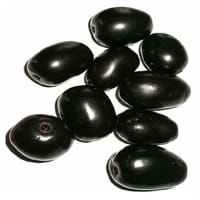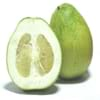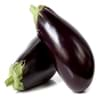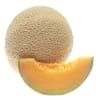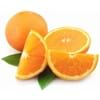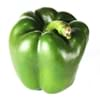Health Benefits
Cancer prevention, Heart care, Increase in haemoglobin, Regulates Blood Sugar, Ulcer prevention
Cancer prevention, Heart care, Increases metabolic rate, Reduces stress, Treatment of dysentary, Treatment of skin Diseases
General Benefits
Boosts immune system, Digestive aid, Fights against infections, Strengthens bones
Digestive aid, Maintains healthy cholesterol level, Strengthens bones
Skin Benefits
Brightens and lightens complexion, Skin cleansing, Skin rejuvenation, Treatment of acne, Treatment of dark spots
Hydrates skin, Skin rejuvenation, Skin revitalization
Hair Benefits
Promotes longer and healthier hair, Protects hair
Promotes longer and healthier hair
Allergy Symptoms
Abdominal pains, NA
Facial muscle tension, Pressure in sinus, Respiratory congestion, Runny nose, Sneezing, Tingling sensation in wrist and face
Side Effects
Decrease in blood sugar levels, Allergic reaction, Throat irritation, Throat swelling, Possibly unsafe during pregnancy
Nausea, Vomiting, Might cause change of urine color
Best Time to Eat
As a snack in the late afternoon, Don't consume at night and before bed, Eat the fresh ones, avoid mixing with any other foods, don't eat after meal., Morning time (before lunch), Strictly avoid empty stomach
Best if taken as a breakfast (or empty stomach), As a snack in the late afternoon, Don't consume at night and before bed, Eat the fresh ones, avoid mixing with any other foods, don't eat after meal., Morning time (before lunch)
Vitamin B5 (Pantothenic Acid)
Not Available
Vitamin B9 (Folic acid)
Not Available
Vitamin C (Ascorbic Acid)
Vitamin E (Tocopherole)
Not Available
Vitamin K (Phyllochinone)
Not Available
Lutein+Zeaxanthin
Not Available
Phytosterol
Not Available
Calories in Fresh Fruit with Peel
Calories in Fresh Fruit without Peel
Not Available
Not Available
Calories in Frozen Form
Not Available
Calories in Dried Form
Not Available
Calories in Canned Form
Not Available
Calories in Pie
Not Available
Type
Tree fruit, Tropical
Berry
Season
Monsoon, Summer
Spring, Summer
Varieties
Ram Jarnun and Paras
Prime Ark, Prime Jim, Illini Hardy, Kiowa, Shawnee, Apache, Arapaho, Chester, Hull, Natchez, Navaho and Triple Crown and Von
Color
Black, Magenta, Purple
Purplish black
Inside Color
Purple
Magenta
Taste
Astringent, Sweet
Juicy, Sweet
Origin
Bangladesh, India, Indonesia, Malaysia, Nepal, Pakistan, Philippines, Sri Lanka
Asia, Europe, North America, South America
Soil Type
Loam, Sandy loam, Well-drained
Well-drained
Climatic Conditions
Humid, Rainfall
Dry, Warm to hot climate
Facts about
- Wood of jambul tree is water-resistant wood & is used in railroads and to implement engines in the well.
- In Indian mythology, it is said that Jambul fruit was revered by Buddha.
- Jambul has a huge importance in Ayurveda.
- There are around 2000 varieties of blackberries throughout the world.
- 80-85 degrees is the ideal temperature for its production.
- Leaves of blackberry tree are used to treat sore throats and mild inflammation of the gums.
Top Producer
India
United States of America
Other Countries
Bangladesh, Indonesia, Malaysia, Nepal, Pakistan, Philippines, Sri Lanka
China, New Zealand, Serbia, South Africa
Top Importer
Not Available
United States of America
Top Exporter
India
Mexico
Botanical Name
Syzygium cumini
Rubus Fruticosus
Synonym
Eugenia cumini
Rubus Millspaughii or Rubus Laciniatus
Subkingdom
Tracheobionta
Tracheobionta
Division
Magnoliophyta
Magnoliophyta
Class
Magnoliopsida
Magnoliopsida
Family
Myrtaceae
Rosaceae
Species
S. cumini
Rubus fruticosus
Generic Group
Not Available
Rose
Difference Between Jambul and Blackberry
We might think that Jambul and Blackberry are similar with respect to nutritional value and health benefits. But the nutrient content of both fruits is different. Jambul and Blackberry Facts such as their taste, shape, color, and size are also distinct. The difference between Jambul and Blackberry is explained here.
The amount of calories in 100 gm of fresh Jambul and Blackberry with peel is 60.00 kcal and 43.00 kcal and the amount of calories without peel is Not Available and Not Available respectively. Thus, Jambul and Blackberry belong to Low Calorie Fruits and Low Calorie Fruits category.These fruits might or might not differ with respect to their scientific classification. The order of Jambul and Blackberry is Myrtales and Rosales respectively. Jambul belongs to Myrtaceae family and Blackberry belongs to Rosaceae family. Jambul belongs to Syzygium genus of S. cumini species and Blackberry belongs to Rubus genus of Rubus fruticosus species. Beings plants, both fruits belong to Plantae Kingdom.
